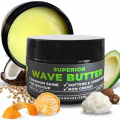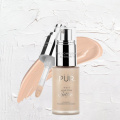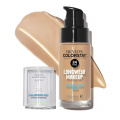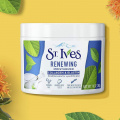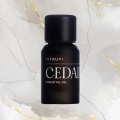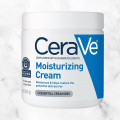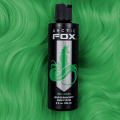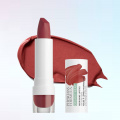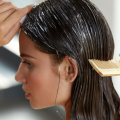Cellulitis Home Treatment to Relieve Your Skin of Pain And Swelling
Cellulitis is a bacterial skin infection. Identifying the causes and symptoms can make cellulitis home treatment possible to relieve the skin of soreness and swelling.
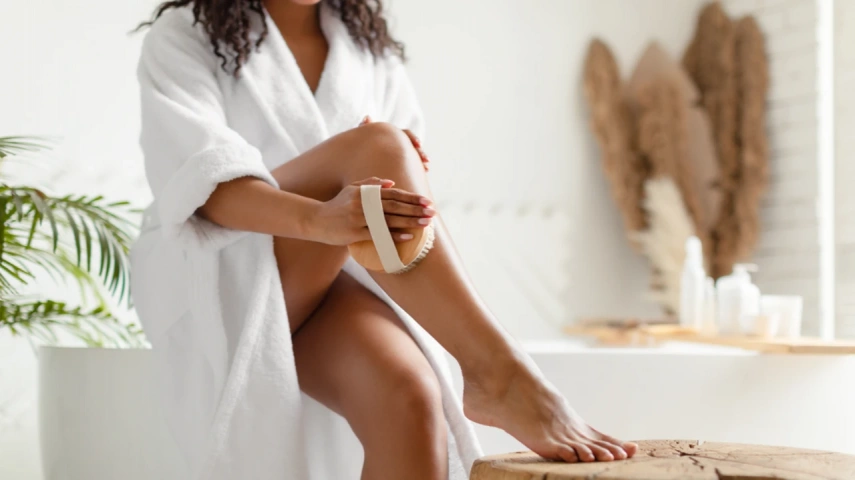
We love healthy skin. But, it’s not always possible to avert skin diseases that may or may not have serious implications. With ruptured skin, there are higher chances of bacteria infecting your skin. One such skin condition is cellulitis. You could try cellulitis home treatment before reaching out to a doctor to relieve your skin of pain and inflammation. But, home remedies for cellulitis may or may not deliver the results you expect unless you understand its causes and symptoms properly.
To understand cellulitis better, let’s dig deeper to find its predominant causes, symptoms, and cure. Early detection of this skin concern can also help in reducing its impact before it leads to any emergency situation. Immediate diagnosis may also make treating cellulitis at home possible to a considerable extent.
What Is Cellulitis?

Cellulitis is an acute bacterial skin infection that affects the dermis and subcutaneous glands. This disease can also affect any part of your body, especially your legs, and face (1). The most common characteristics of this illness are swelling, redness, and increased warmth of your skin. Cellulitis can also affect your lymphatic vessels leading to serious conditions if left untreated (1).
What Causes Cellulitis?
On average, 1 in 40 people get affected by this disorder annually (2). Eczema or foot fungal disease are considered some of the main factors causing cellulitis (2). Streptococcus and staphylococcus bacteria are also among the main causes of cellulitis (3).
Some other predominant causes of cellulitis are (3), (4):
- History of peripheral vascular disease
- Injury or trauma with a break in the skin
- Skin wounds from surgeries
- Insect bites and stings
- Animal or human bites
- Ulcers from vascular diseases
- Use of corticosteroid medicines
- Obesity
- Cancer and immunodeficiency
- Diabetes
- Environmental exposure
- Poor skin and healthcare
- Family history
What Are the Symptoms of Cellulitis?
The following are some of the symptoms of cellulitis (1), (5):
- Tenderness of skin
- Fever with chills and sweating
- Skin redness that increases with infection
- Nausea and vomiting
- Muscle pain and stiffness in the joints
- Swelling
- Erythema
- Increased warmth
What Are the Most Common Types of Cellulitis?
- Orbital Cellulitis: Orbital cellulitis is the bacterial infection of the fat and muscles around the eye that affects eyelids, eyebrows, and cheeks. This form of cellulitis has affected children below the age of 7 more. The cause of this skin condition among young kids has been diagnosed to be Haemophilus influenza (6). While this bacteria causes sinus infection, it eventually develops into orbital cellulitis. This might be quite dangerous and leads to visual impairment. Some of the symptoms include bulging eyes, double vision, painful swelling of the eyelids, and fever (6). Finding a home remedy for this cellulitis may not be the best decision as immediate attention is called for. However, with rapid treatment, complete recovery is attainable.
- Periorbital Cellulitis: Unlike orbital cellulitis, this type of cellulitis leads to the infection of the eyelids or the skin around the eyes. This infection occurs mostly because of an opening in the skin, usually, after scratches, bug bites, or injury around the eye that creates a pathway for bacteria to enter your skin (7). Children below the age of 5 are the most common victims of this bacterial infection. This disease can be identified by redness and swelling of the sclera and the area surrounding the eyes (7). It’s advisable to check with your doctor if these symptoms worsen.
- Facial Cellulitis: This skin condition can be identified by swelling of your face. It may also make your neck and arms feel swollen. The causes may vary from insect stings, tooth abscesses, head injury, eye inflammation, etc. Applying a cold compress on the affected area is an effective natural remedy for facial cellulitis (8). Seek professional help if the swelling becomes severe.
How Can I Get Rid of Cellulitis at Home?
Treating cellulitis at home can improve the healing process. It may also ensure that this skin condition receives immediate attention before creating a serious impact on your skin or affected part of the body.
Here are some of the home remedies for cellulitis:
1) Warm/Cold Compress:
Applying a warm or cold compress to the affected may reduce the swelling and soothe the pain to a certain extent (9). This may also enhance the blood flow to the area affected by this condition which can hasten up the recovery (9).
Steps to Follow:
You can take a towel or cloth and soak it in warm/cold water and then apply it on the affected skin.
Frequency of Usage:
This can be done once or twice a day.
2) Honey:
Honey is antibacterial and anti-inflammatory in nature (10).
Steps to Follow:
Take an appropriate amount of honey and dab it on the affected areas with a cotton/soft cloth. Don't rub it harshly. Let it sit there for 1-2 hours.
Frequency of Usage:
You can apply honey daily to clear out the bacteria from the skin.
3) Coconut Oil:
Coconut oil moisturizes the skin deeply. It's anti-inflammatory in nature and has great skin conditioning properties too (11).
Applying an appropriate amount of this oil on the skin can help in moisturizing the skin as well as keeping it firm and healthy.
Steps to Follow:
Take some drops of coconut oil on a cotton ball and dab it on the areas affected. Avoid rubbing or scratching the infected areas.
Frequency of Usage:
You can do it twice a day.
4) Tea Tree Oil:
Tea tree oil is anti-fungal in nature. It is suitable for clearing out bacteria from the skin (12).
Steps to Follow:
Take an appropriate amount of tea tree oil and dab it lightly on the affected area with cotton.
Frequency of Usage:
You can do it twice a day to keep the area clean and prevent bacteria from entering your skin.
5) Garlic:
Garlic is quite popular for its cleansing properties owing to its inhibitory effect on the skin (13).
Steps to Follow:
You can make a paste of garlic as per the affected area/areas. Apply lightly with hand gloves to avoid direct contact.
Frequency of Usage:
You can repeat it 2-3 times per day.
6) Yogurt:
Yogurt has a soothing effect on the skin. Being rich in probiotics, it has an anti-inflammatory effect on the cellulitis-affected areas (14).
Steps to Follow:
You can consume it in a good amount. Alternatively, you can take an appropriate amount of yogurt and dab it on the skin affected lightly.
Frequency of Usage:
You can do this once or twice a day.
7) Apple Cider Vinegar:
Apple Cider Vinegar can reduce the growth of bacteria and also aids white blood cells in combating the infection (15).
Steps to Follow:
You can take some amount of it on a cotton pad and apply it gently on the affected areas. Alternatively, you can mix it with warm water and soak the affected area for 10-15 minutes.
Frequency of Usage:
You can do it once or twice a day.
8) Turmeric: Turmeric has great healing properties and can be used to treat bacterial infections (16).
Steps to Follow:
You can make a paste of turmeric and apply it to the areas affected. You can also make a drink out of it by taking 1-2 teaspoons of it in a glass of water. Adding honey to this can also have soothing effects on cellulitis.
Frequency of Usage:
You can do it once a day.
9) Fenugreek Seeds:
Fenugreek is analgesic in nature and aids in combating the bacteria causing cellulitis (17).
Steps to Follow:
You can make a paste of fenugreek seeds and apply it to the areas affected. Wash it after 1 hour.
Frequency of Usage:
Do this twice a day to ensure your skin isn't affected by new bacteria.
10) Salt Bath:
Salt bath has anti-inflammatory properties that can be used to treat infections and boost recovery (18).
Steps to Follow:
You can add an appropriate amount of salt to a warm bucket of water and have a light, relaxing bath.
Frequency of Usage:
You can do this alternatively to avoid irritating the skin.
Can Cellulitis Be Prevented?
You may prevent cellulitis by ensuring the following:
- Keep your skin moisturized, especially before going outdoors.
- Use proper equipment designed for the sports and games you’re participating in.
- Wear soft, comfortable shoes that would prevent blisters and swelling of your feet.
- Switch to long-sleeved clothing that can cover your arms during hiking, or evening walks.
- In case you get a cut or wound, wash it properly, apply an antibiotic ointment and keep it covered.
- Change the dressing of your wounds twice a day or every morning.
What Is The Medical Treatment for Cellulitis?
Cellulitis is usually treated with antibiotic doses that may be given to the patients for a week. However, in certain cases, the patients may not recover completely within a week. The same doses of antibiotics may be prescribed again until the patient shows signs of healing completely. Mostly, Flucloxacillin, an antibiotic of the penicillin group, is given to the patients (19). For patients affected with recurrent leg cellulitis, penicillin has proven to be effective as well (20).
Conclusion:-
Cellulitis is a skin infection caused by bacteria, and skin wounds, and can also be attributed to family history as well. Getting affected by this skin disease can be quite discomforting and painful. Equipping yourself with proper knowledge of cellulitis can help you with cellulitis treatment at home. Treating cellulitis naturally can also provide you with some relief from pain and swelling. It can also ensure that this infection doesn't increase. Some types of cellulitis don't have serious implications. However, if the symptoms become severe, it's better to seek a doctor's help at the earliest.
Sources:
1. Medical management of cellulitis
https://www.indianjournals.com/ijor.aspx?target=ijor:rjpt&volume=9&issue=11&article=051
2. Management of cellulitis: current practice and research questions
https://www.ncbi.nlm.nih.gov/pmc/articles/PMC6255235/
3. Cellulitis
https://medlineplus.gov/ency/article/000855.htm
4. Recurrent Cellulitis: Who is at Risk and How Effective is Antibiotic Prophylaxis?
https://www.ncbi.nlm.nih.gov/pmc/articles/PMC9379124/#cit0010
5. Cellulitis
6. Orbital cellulitis
https://medlineplus.gov/ency/article/001012.htm
7. Periorbital cellulitis
https://medlineplus.gov/ency/article/000976.htm
8. Facial swelling
https://medlineplus.gov/ency/article/003105.htm
9. Impact of Warm Compresses on Local Injection-Site Reactions with Self-Administered Glatiramer Acetate
10. Nutraceutical values of natural honey and its contribution to human health and wealth
https://link.springer.com/article/10.1186/1743-7075-9-61/
11.In vitro anti-inflammatory and skin protective properties of Virgin coconut oil
https://www.sciencedirect.com/science/article/pii/S2225411017300871
12. Tea tree oil reduces histamine?induced skin inflammation
https://academic.oup.com/bjd/article-abstract/147/6/1212/6637547
13.Phytochemical Characteristics and Antimicrobial Activity of Australian Grown Garlic (Allium Sativum L.) Cultivars
https://www.mdpi.com/2304-8158/8/9/358
14. Effects of Fermented Dairy Products on Skin: A Systematic Review
https://www.liebertpub.com/doi/abs/10.1089/acm.2014.0261
15. Apple cider vinegar boosted immunomodulatory and health promoting effects of Lactobacillus casei in common carp (Cyprinus carpio)
https://www.sciencedirect.com/science/article/abs/pii/S1050464817303388
16. Effects of Turmeric (Curcuma longa) on Skin Health: A Systematic Review of the Clinical Evidence
https://onlinelibrary.wiley.com/doi/abs/10.1002/ptr.5640
17. Dietary administration effects of fenugreek seeds on skin mucosal antioxidant and immunity status of gilthead seabream (Sparus aurata L.)
https://www.sciencedirect.com/science/article/abs/pii/S1050464818300871
18. Bathing in a magnesium-rich Dead Sea salt solution improves skin barrier function, enhances skin hydration, and reduces inflammation in atopic dry skin
https://onlinelibrary.wiley.com/doi/abs/10.1111/j.1365-4632.2005.02079.x
19. Management of cellulitis: current practice and research questions
https://www.ncbi.nlm.nih.gov/pmc/articles/PMC6255235/
20.Penicillin to Prevent Recurrent Leg Cellulitis
https://www.nejm.org/doi/full/10.1056/NEJMoa1206300





 JOIN OUR WHATSAPP CHANNEL
JOIN OUR WHATSAPP CHANNEL




































